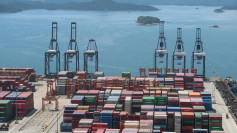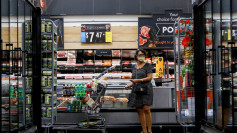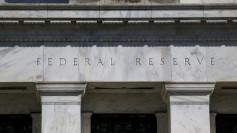The U.S. economy grew at an annualized pace of 3% in the second quarter, significantly outpacing Wall Street expectations and reversing a contraction in the first quarter, as falling imports and a pickup in consumer spending bolstered overall output despite ongoing tariff pressures. The Commerce Department released the data Wednesday ahead of a highly anticipated Federal Reserve policy announcement.
The stronger-than-expected GDP figure topped the 2.3% consensus estimate from economists surveyed by Dow Jones and marked a rebound from the first quarter's 0.5% decline. A steep 30.3% plunge in imports, following a 37.9% surge in Q1 as businesses scrambled to front-load purchases ahead of President Donald Trump's tariff hikes, contributed heavily to the recovery.
Consumer spending rose 1.4% in the second quarter, improving from the prior quarter's 0.5%, though still reflecting the slowest two-quarter stretch since the pandemic. Business investment, meanwhile, slowed sharply to a 1.9% rate from 10.3%, a sign of waning momentum following the early-year inventory build-up.
"The word of the summer for the economy is 'resilient,'" said Heather Long, chief economist at Navy Federal Credit Union. "The consumer is hanging in there, but still on edge until the trade deals are done."
President Trump celebrated the GDP report on Truth Social, posting: "2Q GDP JUST OUT: 3%, WAY BETTER THAN EXPECTED!" He added, "'Too Late' MUST NOW LOWER THE RATE. No Inflation! Let people buy, and refinance, their homes!"-a jab at Federal Reserve Chair Jerome Powell.
The Fed, which concludes its policy meeting later Wednesday, is widely expected to hold interest rates steady in the 4.25% to 4.5% range. The central bank has maintained that level since December, even as core inflation cools. The personal consumption expenditures price index-the Fed's preferred inflation gauge-rose 2.1% in Q2, down from 3.7% in Q1. Core PCE, which strips out food and energy, increased 2.5%, also easing from 3.5%.
Still, some economists see signs of fragility beneath the headline figure. Real final sales to private domestic purchasers-a key measure of core demand-rose just 1.2%, the slowest pace since Q4 2022. "Headline numbers are hiding the economy's true performance, which is slowing as tariffs take a bite out of activity," said Kathy Bostjancic, chief economist at Nationwide.
Residential investment, hampered by high mortgage rates, fell 4.6%. Government spending also declined, with federal outlays down 3.7% and state and local expenditures rising 3%.
"This GDP release has shown strength," said National Economic Council Director Kevin Hassett on CNBC. "The anti-Trump story has been that we're going to have a recession or a depression because of the tariffs... In fact, every single thing about this GDP release has shown strength."






